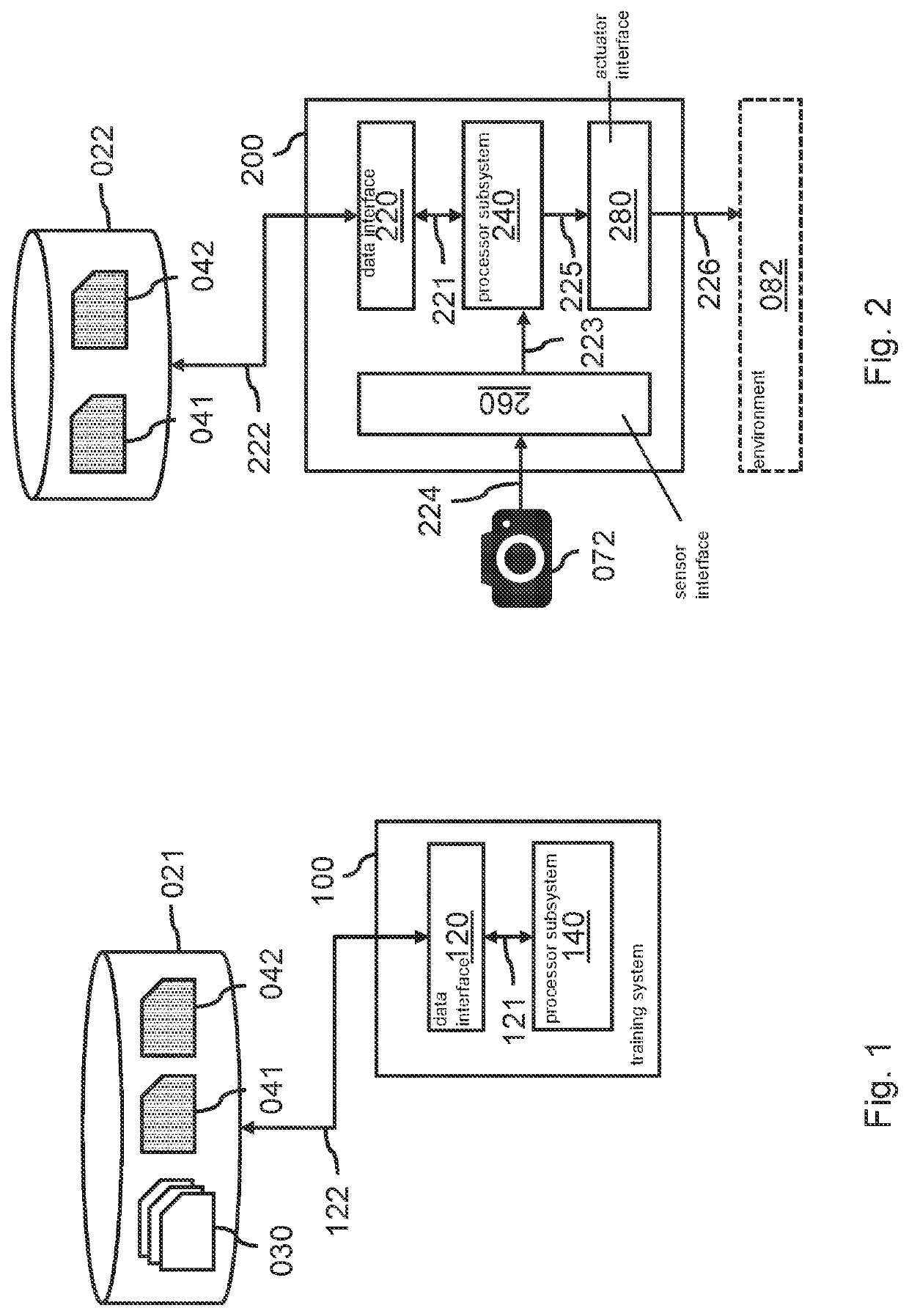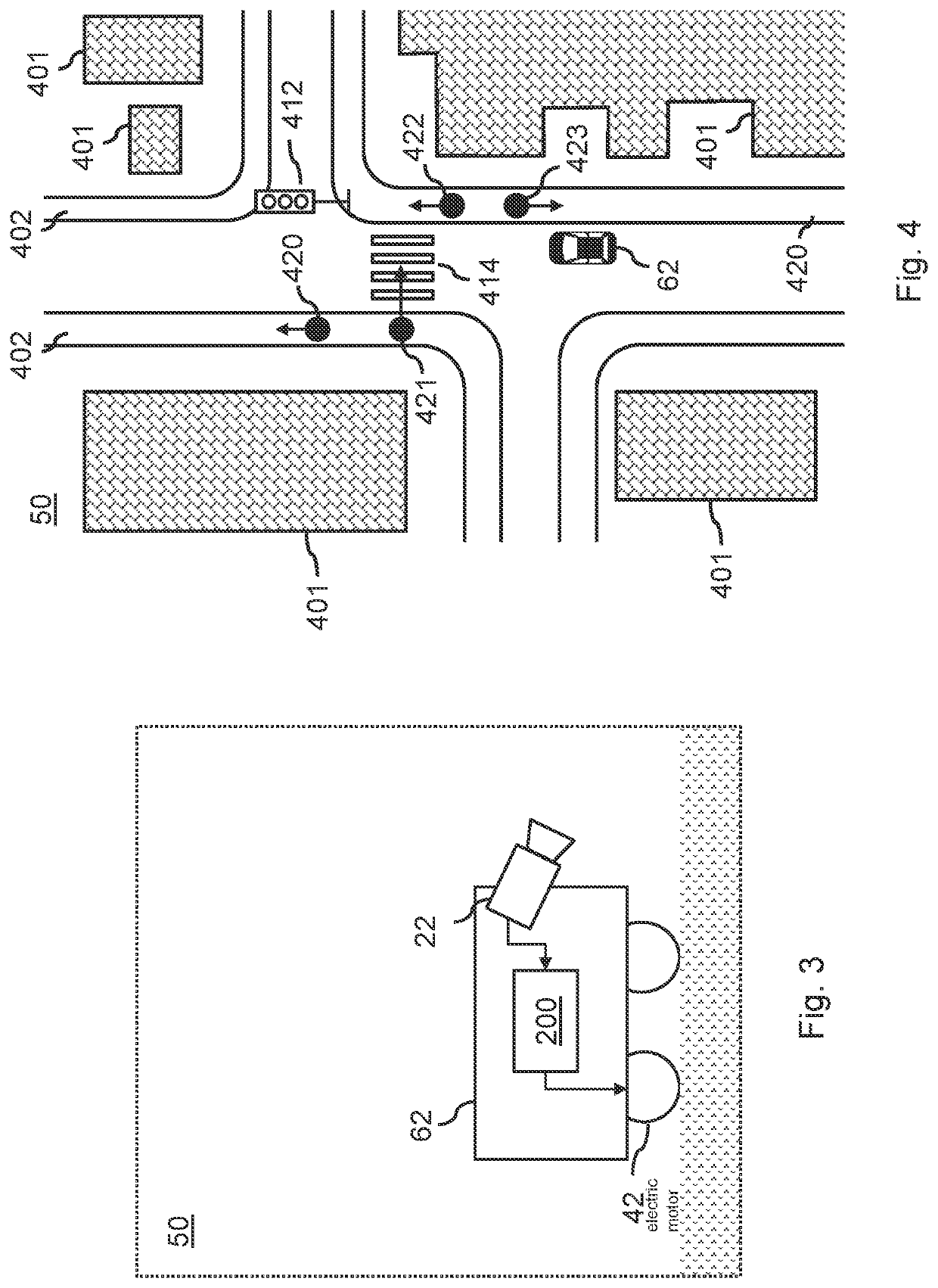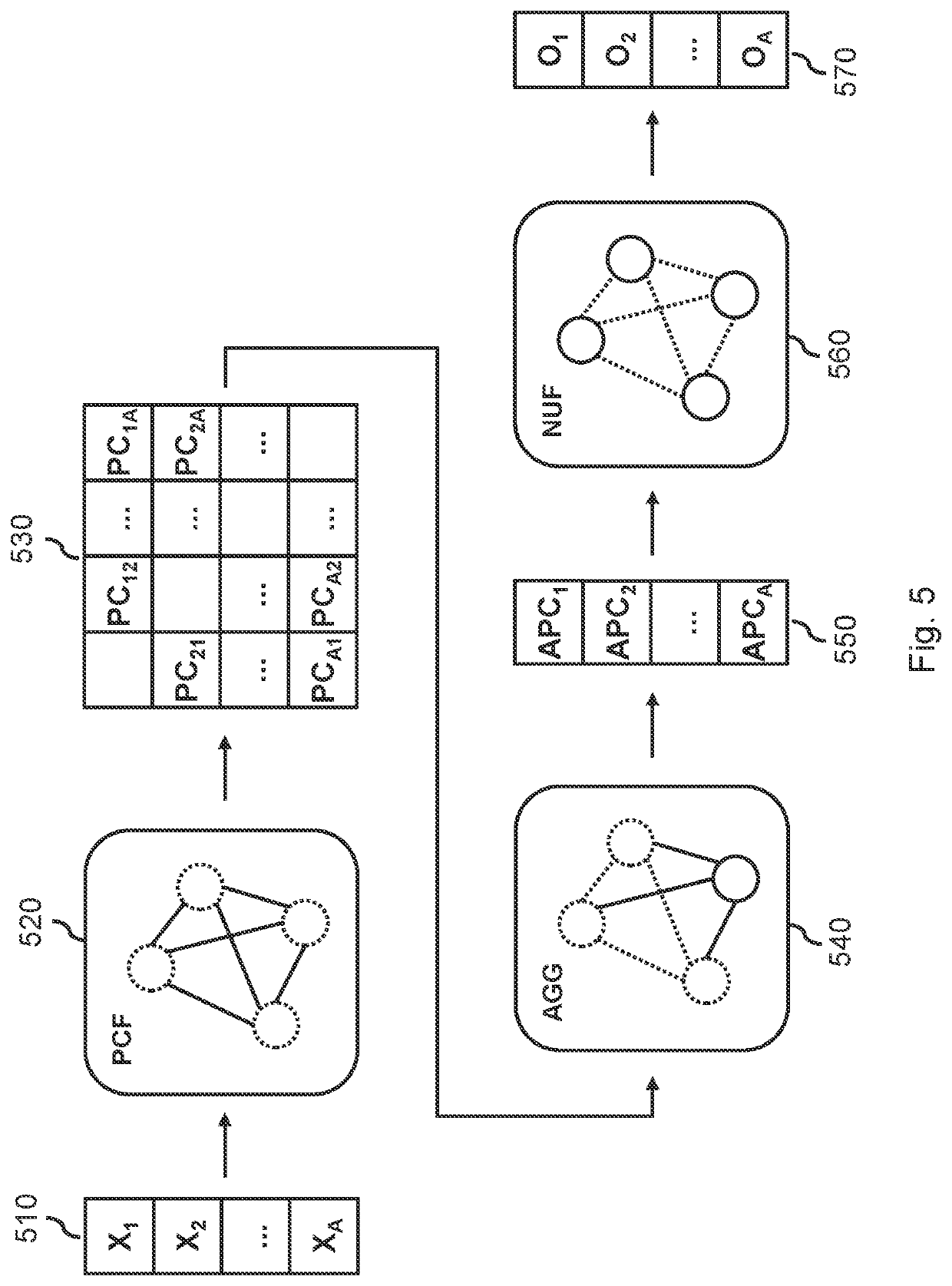Making time-series predictions using a trained decoder model
a decoder model and time-series prediction technology, applied in the field of computer-implemented prediction method of making time, can solve the problems of difficult to obtain a prediction algorithm that is sufficiently accurate for real-world applications, complex prediction tasks, and difficulty in achieving prediction algorithms, so as to reduce the risk of arriving at a local optimum, improve computational complexity of training, and reduce the effect of convergence ra
- Summary
- Abstract
- Description
- Claims
- Application Information
AI Technical Summary
Benefits of technology
Problems solved by technology
Method used
Image
Examples
Embodiment Construction
[0060]FIG. 1 shows a training system 100 for training a decoder model 041 for making time-series predictions of multiple interacting objects relating to a computer-controlled system. A respective object may be part of the computer-controlled system or its environment. The system 100 may comprise a data interface 120 for accessing training data 030 representing multiple observed scenes. As shown in the figure, data interface 120 may also be for accessing model data 041 representing the decoder model, an optionally for accessing model data 042 representing an encoder model also trained by system 100. The model data 041, 042 may be for use in analysing observations of interacting objects and / or making time-series predictions of interacting objects according to a method described herein, e.g., by system 200 of FIG. 2. System 100 may be configured to apply the model(s) 041, 042 in addition to training them, e.g., system 100 may be combined with system 200 of FIG. 2.
[0061]For example, as ...
PUM
 Login to View More
Login to View More Abstract
Description
Claims
Application Information
 Login to View More
Login to View More - R&D
- Intellectual Property
- Life Sciences
- Materials
- Tech Scout
- Unparalleled Data Quality
- Higher Quality Content
- 60% Fewer Hallucinations
Browse by: Latest US Patents, China's latest patents, Technical Efficacy Thesaurus, Application Domain, Technology Topic, Popular Technical Reports.
© 2025 PatSnap. All rights reserved.Legal|Privacy policy|Modern Slavery Act Transparency Statement|Sitemap|About US| Contact US: help@patsnap.com



